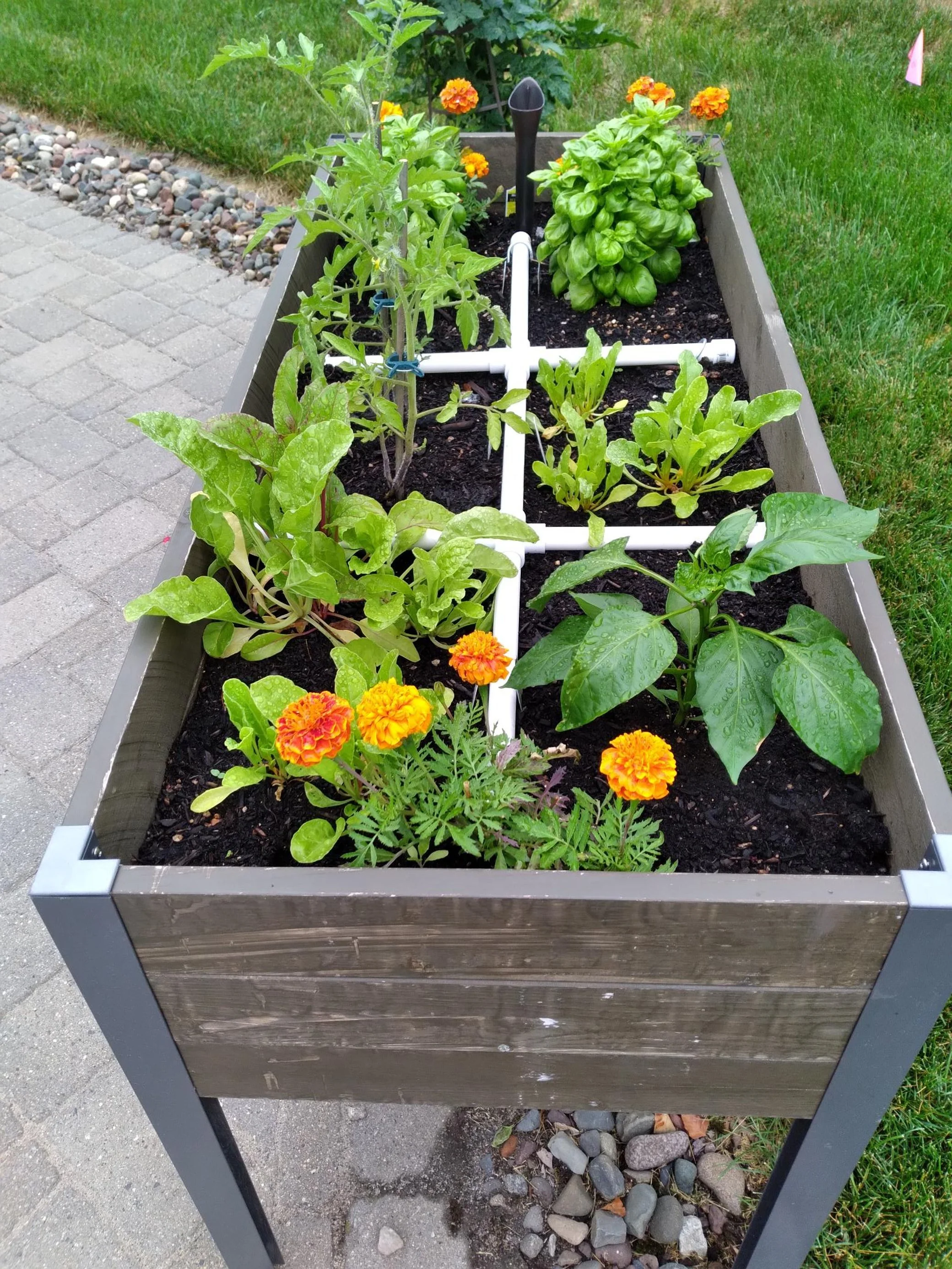Square Foot Gardening for Small Spaces
By Tim Atchley, Anoka County Extension Master Gardener
With the cost of groceries continuing to rise, many of us are looking for more economical ways to eat healthy. A great option is to grow your own vegetables. Did you know that you can grow vegetables even in an area without a traditional yard? All you need is enough space for a 3-foot by 2-foot box and a location that receives four to eight hours of direct sunlight.
Square foot gardening is an intensive gardening technique developed in the late 1970’s by Mel Bartholomew. It is designed to maximize the output of a garden space by utilizing companion planting and soil science, which also minimizes weeds and the need for excess watering and fertilizing.
To create your square foot garden, you will need to do some crop planning. For example, if your site is mainly part-sun (less than six hours), you will have better results planting vegetables that need less light to flourish, such as lettuces and peas. Some vegetables, like tomatoes, will perform better when planted next to carrots or basil; there are also plant combinations that can be detrimental. Taking advantage of beneficial plant combinations is called companion planting, and there are many resources available to help you determine what will work best in your garden space. Once you have selected your crops, here are the next steps:
Purchase or build an elevated planting box. I recommend buying one since they are now available in most big box stores.
Fill your planting box with a soil mix that retains moisture without drowning the roots of your plants. I recommend “Mel’s Mix,” which is one-third compost, one-third peat moss or coconut coir, and one-third course vermiculite. This mix also gives the needed minerals and nutrients for the growing season and is PH balanced, so additional fertilizing won’t be necessary. Potting soil is not an adequate substitute.
For shallow-rooted crops like herbs and greens, fill your box to a depth of at least 6 inches of soil. For carrots and tomatoes, 12 inches is recommended.
Using the 3-by-2-foot example, measure out six squares that are 12-by-12 inches.
Now you are ready to plant your garden space using suggested square foot gardening combinations. I like to purchase the plants for my garden (pictured), but you can also grow some crops from seed. This is how I structured my garden:
Square 1: Tomato, one plant
Square 2: Green pepper, one plant
Square 3: Basil, one plant
Square 4: Basil, one plant
Square 5: Radishes, 16 seeds/plants
Square 6: Spinach, nine seeds/plants
Remember to prune off dead or diseased foliage, and water regularly as you would in any garden space. A soaker hose is a good way to conserve water and can be easily installed in a small bed. Good luck and have fun!
If you are interested in creating your own square foot garden, I recommend visiting the Square Foot Gardening Foundation for additional tips and tricks: https://squarefootgardening.org
Interested in becoming an Extension Master Gardener volunteer? Applications accepted now through October 1. Visit https://extension.umn.edu/master-gardener/become-master-gardener to apply.

